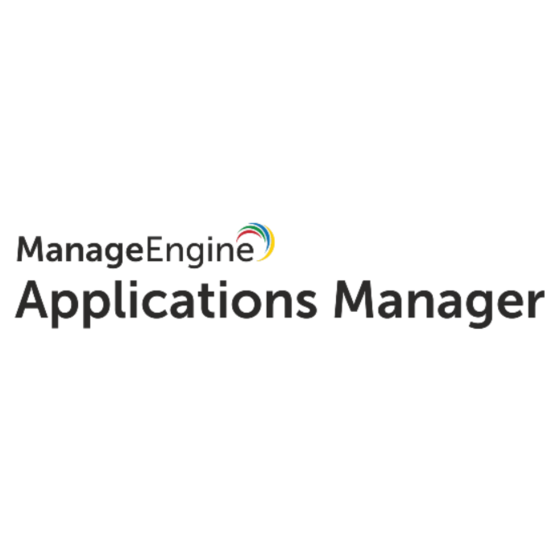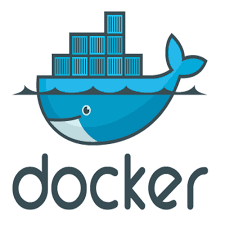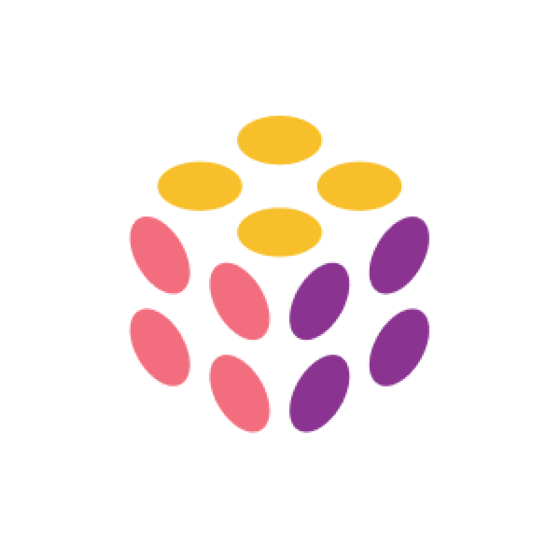10 Best Container Management Software Shortlist
Here's my pick of the 10 best software from the 25 tools reviewed.
Our one-on-one guidance will help you find the perfect fit.
Navigating the world of docker containers in agile environments demands robust container management solutions. With the rise of microservices and varying operating systems, it's crucial to manage container images and dependencies efficiently. Container-based deployments, whether on Windows or in the public cloud, require tools that simplify provisioning, bolster container security, and offer intuitive user interfaces.
Elastic container services and monitoring tools further ensure that both on-premise and public cloud deployments function. Understanding this intricate landscape, I've delved deep into these frameworks to help you pinpoint solutions that address your specific pain points.
What Is A Container Management Software?
Container management software is a specialized set of tools designed to facilitate the creation, deployment, and scaling of containers in software applications. Primarily utilized by DevOps professionals, system administrators, and developers, these tools offer a consistent environment for applications to run, irrespective of where they're deployed.
They address the challenges of maintaining application consistency across diverse environments, ensuring efficient resource allocation, and simplifying complex orchestration tasks, thus streamlining the entire container lifecycle.
Best Container Management Software Summary
| Tool | Best For | Trial Info | Price | ||
|---|---|---|---|---|---|
| 1 | Best for Kubernetes and Docker visibility | Free trial + demo available | Pricing upon request | Website | |
| 2 | Best for container monitoring | 30-day free trial + demo available | From $395/year (billed annually) | Website | |
| 3 | Best for simple and efficient container management | Not available | Website | ||
| 4 | Best for lightweight and fast virtualization | Not available | Free (open-source) | Website | |
| 5 | Best for hybrid cloud container platform solutions | Free trial available | Pricing upon request | Website | |
| 6 | Best for Alibaba Cloud-native applications | Not available | Pricing upon request | Website | |
| 7 | Best for open-source container orchestration | Not available | Free to use | Website | |
| 8 | Best for Open Container Initiative (OCI) based operations | Not available | Free plan available | Website | |
| 9 | Best for automated operations in GCP | Not available | From $0.10/user/month (based on compute resources used) | Website | |
| 10 | Best for core container runtime without the frills | Not available | Free plan available | Website |
-

Docker
Visit WebsiteThis is an aggregated rating for this tool including ratings from Crozdesk users and ratings from other sites.4.6 -

Pulumi
Visit WebsiteThis is an aggregated rating for this tool including ratings from Crozdesk users and ratings from other sites.4.8 -

GitHub Actions
Visit Website
Best Container Management Software Reviews
Site24x7 is a cloud-based, AI-powered monitoring solution designed to provide comprehensive visibility into your IT infrastructure. It enables you to monitor websites, servers, networks, applications, and cloud platforms, ensuring optimal performance and availability.
Why I Picked Site24x7: One reason to consider Site24x7 for container management is its robust container monitoring capabilities. It offers in-depth visibility into your containerized environments, allowing you to track key performance indicators such as CPU, memory, disk, and network usage. This ensures efficient resource utilization and helps prevent bottlenecks in your containerized applications. Another notable feature is Site24x7's support for monitoring Docker environments. It provides easy access to collect container logs directly via the AppLog agent running on your Linux server, facilitating troubleshooting of applications running within Docker containers.
Standout Features & Integrations:
Other features include monitoring of Kubernetes clusters, allowing you to track the health and performance of your Kubernetes environment. Site24x7 also offers Azure Container Apps monitoring integration, enabling you to monitor your container apps with accurate metrics and receive instant alerts if there is a breach. Some integrations include ServiceNow, PagerDuty, Opsgenie, Jira, ManageEngine AlarmsOne, ManageEngine ServiceDesk Plus, Slack, Microsoft Teams, Zoho Cliq, Amazon EventBridge, Zapier, and Webhooks.
Pros and cons
Pros:
- Comprehensive monitoring capabilities across various IT infrastructure components
- Reliable real-time alerts that enable prompt issue resolution
- Flexible customization options for dashboards and reports
Cons:
- Configuration complexity can be challenging for new users
- Limited integration options with certain third-party tools
New Product Updates from Site24x7
Amazon CloudWatch Logs Integration
Site24x7 integrates with Amazon CloudWatch Logs, offering centralized log analytics, real-time alerts, and metric correlation. Monitor log groups and gain region-level insights within Site24x7. More details at Site24x7 What's New.
ManageEngine Applications Manager is an application performance monitoring solution that helps IT teams oversee the health and performance of their applications and infrastructure. It offers real-time monitoring and management capabilities, ensuring that critical business applications run smoothly. With support for over 150 technologies, it provides a comprehensive view of your IT environment.
Why I Picked ManageEngine Applications Manager: It offers the ability to monitor Docker environments effectively. It tracks various performance metrics such as CPU and memory usage, helping you ensure that your containers are operating efficiently. This level of monitoring allows you to identify and address resource bottlenecks promptly, maintaining optimal performance. It also supports Kubernetes monitoring by providing insights into the performance of Kubernetes clusters, including node and pod statuses. By keeping an eye on these components, your team can proactively manage potential issues, ensuring the reliability of your containerized applications.
Standout Features & Integrations:
Other features include real-time application performance tracking, which allows you to identify and resolve issues before they impact users. The tool also offers end-user experience monitoring, giving you insights into how your applications perform from the user's perspective. Some integrations include ADManager Plus, ADAudit Plus, ADSelfService Plus, M365 Manager Plus, OpManager, Site24x7, Log360, EventLog Analyzer, DataSecurity Plus, Endpoint Central, Patch Manager Plus, and Mobile Device Manager Plus.
Pros and cons
Pros:
- Supports a wide range of technologies
- Effective alerting system
- Comprehensive monitoring capabilities
Cons:
- Can be resource-intensive on large scales
- Complex initial setup
Portainer breaks down the complexities of container management into an intuitive interface, making the task of managing and orchestrating Docker and Kubernetes environments more accessible. The platform’s straightforward approach to container management is a relief for both novices and seasoned professionals.
Why I Picked Portainer: In selecting a container management platform, the balance between power and simplicity was paramount for me. Portainer stood out because it transforms complex container tasks into manageable actions through a user-friendly interface. This made me believe it's the best tool for those who value efficiency without a steep learning curve.
Standout Features & Integrations:
Portainer provides a unified dashboard for container orchestration, offering visibility into services, containers, images, and networks. It supports both Docker and Kubernetes, ensuring flexibility in the choice of orchestration. Additionally, integrations with popular registries like Docker Hub, Quay.io, and Azure Container Registry augment its capabilities.
Pros and cons
Pros:
- Unified dashboard for comprehensive visibility
- Supports both Docker and Kubernetes
- Intuitive UI for easier container management
Cons:
- Limited community edition features
- Integration with other tools may require manual configurations
- Might lack some advanced functionalities
Linux Containers, often referred to as LXC/LXD, present a robust solution for those seeking a lightweight virtualization method. Unlike traditional virtual machines, LXC offers a more efficient, less resource-intensive alternative while still providing isolation.
Why I Picked Linux Containers: Choosing a virtualization solution often boils down to a balance between performance and resource consumption. In my analysis of various tools, LXC's ability to provide fast and efficient virtualization without draining resources made it an obvious pick. It's this unique lightweight approach that I believe suits users wanting performance without overheads best.
Standout Features & Integrations:
LXC is known for its scalability and density, allowing many containers to run on a single machine without significant overhead. It's also OS-agnostic, meaning containers can run different Linux distributions regardless of the host OS. Integration-wise, LXC works well with most Linux distributions and can be managed using its native tools or third-party solutions like Juju.
Pros and cons
Pros:
- High scalability and density
- OS-agnostic container capability
- Efficient, lightweight virtualization
Cons:
- Lack of native GUI may deter some users
- Some advanced configurations might be challenging
- May not be suitable for non-Linux environments
Red Hat OpenShift is a Kubernetes-based hybrid cloud platform designed to enable the deployment and management of containerized applications. Catering to both public and private cloud environments, OpenShift is specifically aligned with businesses searching for flexible hybrid cloud solutions.
Why I Picked Red Hat OpenShift: OpenShift caught my attention due to its versatility in catering to both public and private cloud deployments. My determination, rooted in objective comparisons and evaluations, led me to believe that OpenShift's adeptness at handling hybrid cloud solutions sets it apart from other platforms. Its prowess in this domain justifies its position as the best solution for hybrid cloud container platform needs.
Standout Features & Integrations:
OpenShift offers automated operations, developer services for a consistent experience and multi-cluster management. Integrations are abundant, with support for Jenkins for CI/CD, Prometheus for monitoring, and deep ties with Red Hat’s extensive software suite.
Pros and cons
Pros:
- Extensive developer services for a uniform experience
- Integration with Red Hat’s suite of tools
- Provides a robust platform for hybrid cloud solutions
Cons:
- Setup can be intricate for newcomers
- Requires familiarity with Red Hat’s ecosystem
- Pricing might be on the higher side for small businesses
Alauda Container Platform is tailor-made for those deeply embedded in the Alibaba Cloud ecosystem. It streamlines the deployment and management of cloud-native applications on this specific platform.
Why I Picked Alauda Container Platform: In assessing tools specific to cloud platforms, I noticed a gap when it came to Alibaba Cloud. My judgment led me to the Alauda Container Platform, which offers specialized features tailored to Alibaba's environment. For those entrenched in the Alibaba Cloud infrastructure, I opined this to be the best fit.
Standout Features & Integrations:
The platform offers end-to-end container solutions, from development to production, all optimized for Alibaba Cloud. Its native tools, like the Alauda DevOps platform, allow for streamlined application lifecycle management. Furthermore, it integrates well with Alibaba Cloud's suite of services, making the deployment and scaling process smooth.
Pros and cons
Pros:
- Native tools for enhanced application management
- Comprehensive container solutions from dev to prod
- Tailored for Alibaba Cloud environment
Cons:
- Fewer community contributions compared to more mainstream platforms
- Might have a steeper learning curve for the uninitiated
- Less versatile for non-Alibaba Cloud users
Kubernetes stands as an open-source platform designed to automate the deployment, scaling, and operation of application containers. Given its vast community support and adaptability, it has become the de facto choice for organizations aiming for effective container orchestration.
Why I Picked Kubernetes: Choosing Kubernetes was a natural decision, given its prominence and widespread adoption in the container orchestration space. In comparing and weighing the merits of various platforms, it became clear to me that Kubernetes’ open-source nature and vast community support made it unique. These attributes underscore its position as the top choice for open-source container orchestration.
Standout Features & Integrations:
Kubernetes boasts features like automatic bin packing, self-healing mechanisms, and horizontal scaling. Its integration capabilities are vast, with compatibility for tools like Helm for package management, Istio for service mesh, and Grafana for monitoring.
Pros and cons
Pros:
- Wide range of integrations with other tools
- Broad community support leading to rapid innovations
- The rich feature set for container orchestration
Cons:
- Community support, while vast, can sometimes be fragmented
- Requires in-depth knowledge of advanced configurations
- The steep learning curve for beginners
CRI-O is built around the idea of offering a lightweight container runtime optimized for OCI compatibility. It ensures that containers running under Kubernetes align with the Open Container Initiative standards.
Why I Picked CRI-O: When choosing tools, OCI compatibility was a key factor. I determined that CRI-O, with its focused approach to OCI-based operations, offered something distinct from many other runtimes. For those prioritizing strict OCI adherence, CRI-O undoubtedly shines the brightest.
Standout Features & Integrations:
CRI-O offers a high degree of modularity, allowing users to swap out or replace components as needed. Its commitment to OCI standards means it provides a reliable environment for Kubernetes containers. On the integration front, CRI-O works harmoniously with major Kubernetes versions, guaranteeing consistent performance.
Pricing:
Pros and cons
Pros:
- Kubernetes integrations
- High modularity for custom configurations
- Strict adherence to OCI standards
Cons:
- Requires more specific knowledge for optimization
- Fewer community plugins compared to other runtimes
- Might be niche for those not prioritizing OCI
Google Kubernetes Engine offers an environment for deploying, managing, and scaling containerized applications using Google’s infrastructure. Being deeply integrated with the Google Cloud Platform (GCP), GKE stands out as an ideal solution for businesses that prioritize automation within the GCP ecosystem.
Why I Picked GKE: The decision to choose GKE was grounded in its tight-knit integration with GCP and its automation capabilities. From my evaluation and the opinions I formed, I determined that GKE’s strength lies in its automation features, especially for those already invested in the Google Cloud ecosystem.
Standout Features & Integrations:
GKE offers automated cluster management, allowing for auto-upgrades, auto-scaling, and auto-repair. It integrates with GCP services such as Stackdriver for logging and monitoring, Google Cloud Storage, and BigQuery for data analysis.
Pros and cons
Pros:
- Reliable security with Google-backed infrastructure
- Robust automated cluster management features
- Deep integration with Google Cloud services
Cons:
- Limited flexibility outside the GCP ecosystem
- Pricing can become complex based on resource consumption
- Might be less intuitive for non-GCP users
At its essence, containerd is all about providing the core functionalities of a container runtime. Stripped of unnecessary extras, it caters to those looking for a straightforward solution without any added complexities.
Why I Picked containerd: In selecting the right tools, I place a high emphasis on simplicity and efficiency. While comparing various container runtimes, containerd stood out for its focus on delivering the basics without any added layers. It's this no-frills approach that makes it the ideal choice for those wanting a core container runtime, free from distractions.
Standout Features & Integrations:
containerd is designed to be less monolithic, which means it offers a leaner approach to runtime. It supports OCI images, ensuring a consistent and standard approach. In terms of integrations, it aligns well with Docker and Kubernetes, providing a bridge between these platforms.
Pros and cons
Pros:
- Integrates well with Docker and Kubernetes
- Full OCI image support
- Lean and efficient core runtime
Cons:
- Documentation can be sparse for newcomers
- Might require additional tools for complete orchestration
- Lacks some advanced features found in other runtimes
Other Noteworthy Container Management Software
Below is a list of additional container management software that I shortlisted, but did not make it to the top 10. They are definitely worth checking out.
- Mirantis Kubernetes Engine
For large-scale container orchestration
- Sysdig
For container and Kubernetes security insights
- Rancher
For enterprise Kubernetes management
- Amazon Elastic Kubernetes Service (Amazon EKS)
For AWS-native Kubernetes deployments
- Google Cloud Run
Good for event-driven computing solutions
- Azure Arc
Good for managing resources across multiple clouds
- IBM Cloud Kubernetes Service
Good for hybrid cloud deployments on IBM Cloud
- Apache Mesos
Good for large-scale cluster management
- Oracle Cloud Infrastructure Container Engine for Kubernetes (OKE)
Good for Oracle Cloud-native container orchestration
- Kontena Pharos
Good for maintainable Kubernetes clusters
- AWS Fargate
Good for serverless container deployments on AWS
- Microsoft Azure Kubernetes Service (AKS)
Good for integrating with Azure services
- VMware Tanzu for Kubernetes Operations
Good for integrating with VMware infrastructure
- Nomad
Good for flexible workload orchestration
- Huawei Cloud Container Engine (CCE)
Good for Huawei Cloud-native deployments
Other Container Management Software Reviews
Selection Criteria For The Best Container Management Software
When navigating the vast landscape of container management and orchestration platforms, it becomes crucial to know what to prioritize. Over the years, I've evaluated dozens of container orchestration tools, and I've come to realize that a few distinct criteria set the best apart from the rest. In this evaluation, I particularly prioritized the following elements:
Core Functionality
- Container Orchestration: The tool should efficiently manage container deployment, scaling, and scheduling.
- Service Discovery: It should automatically discover and communicate with services.
- Load Balancing: Distribute traffic across a set of services or containers.
- Automatic Rollouts & Rollbacks: Update containers and revert changes if something goes wrong.
- Secret & Configuration Management: Store sensitive data and manage application configurations.
Key Features
- Scalability: Ensures the system can handle increased demands by adjusting the container resources.
- Multi-Cloud Integration: Compatibility with multiple cloud service providers, not just one.
- Security Protocols: Essential features like role-based access controls, network policies, and secret management.
- Monitoring & Logging: In-built capabilities to monitor container health and log essential data.
- Extensibility: Ability to integrate with additional plugins or extensions to enhance functionality.
- Storage Management: Ensuring persistent, reliable, and efficient storage solutions.
Usability
- Intuitive Dashboard: A clear, organized dashboard that provides an overview of clusters, nodes, and container health.
- Role-Based Access: Configuration options to grant or restrict access based on user roles.
- API-Driven Interface: Provides flexibility and customization options for advanced users.
- Active Community & Documentation: Presence of a robust user community and comprehensive documentation to assist in troubleshooting and onboarding.
- Consistent Updates & Patches: The tool should have a history of regular updates to address issues and introduce improvements.
- Training & Learning Resources: For complex enterprise solutions, the availability of training programs, wikis, or learning libraries is a boon.
Most Common Questions Regarding Container Management Software
What are the benefits of using container management software?
Container management software offers numerous advantages to businesses and developers:
- Scalability: Easily adjust to growing user demands by scaling services up or down.
- Efficiency: Maximize server and infrastructure usage by running multiple containers on a single machine.
- Isolation: Containers run in isolation, ensuring that they don’t interfere with each other or with the host system.
- Consistency: Maintain a consistent environment across the development, testing, and production phases.
- Portability: Containers can be moved across local machines, data centers, and various cloud environments.
How much do these tools typically cost?
The cost of container management tools varies widely, depending on factors like features, scalability options, and the intended user base. Some tools offer a free tier, while others might charge based on the number of nodes, clusters, or containers managed.
Can you explain the typical pricing models for these tools?
Container management software usually follows these pricing models:
- Per Node Pricing: Charges are based on the number of nodes or instances being managed.
- Resource Consumption: Pricing depends on the amount of CPU, memory, or storage resources consumed.
- Flat Rate: A fixed monthly or yearly rate regardless of usage or scale.
- Freemium: Basic features are available for free, with advanced features and scalability options in paid tiers.
Which software is known to be the cheapest?
The pricing landscape is dynamic, with promotions, updates, and changes. However, as of the latest information, tools like K3s and Nomad tend to be on the more affordable end of the spectrum.
Which software is the most expensive?
Enterprise solutions, such as those offered by leading cloud providers like AWS, Google Cloud, and Azure, can be more expensive, especially when considering the full range of features and scalability options.
Are there any free options available?
Yes, several tools offer free tiers or entirely free versions. Kubernetes, for example, is an open-source platform and can be used free of charge. However, there may be costs associated with running it on cloud platforms or using additional integrations and features.
Why is there such a range in pricing for these tools?
The vast range in pricing is due to the varied features, scalability options, target audience (from individual developers to large enterprises), and levels of support and maintenance offered by different tools. Some tools might also include additional services like monitoring, logging, or security features that can affect the price.
Do I always need a paid version to get the best features?
Not necessarily. Many open-source or freemium tools offer robust features that cater to a wide range of needs. However, paid versions often provide additional benefits like premium support, advanced security features, and more extensive scalability options.
Summary
Selecting the right container management software is pivotal for businesses aiming to achieve scalability, efficiency, and consistency in their operations. This guide delved deep into various top-tier container management tools, highlighting their unique selling propositions, key functionalities, usability factors, and pricing models.
I also touched on the importance of discerning key features specifically for individual needs rather than focusing on the multitude of functionalities these tools might offer.
Key Takeaways
- Understand your needs: Before choosing a tool, pinpoint your specific requirements. Whether you're leaning towards efficiency, scalability, or a balance of both, there's likely software tailored to your needs.
- Pricing doesn't equate to quality: While some expensive tools offer extensive features and support, many affordable or even open-source platforms can provide robust functionalities that cater to a wide range of requirements.
- Prioritize usability and support: The design, onboarding ease, and customer support of a tool can significantly impact its usability. Ensure the chosen software aligns with the user experience you anticipate, especially if it's intended for a larger team or complex projects.
Final Thoughts
There are many noteworthy container and Kubernetes resources to explore. Let's broaden our knowledge base together.

























